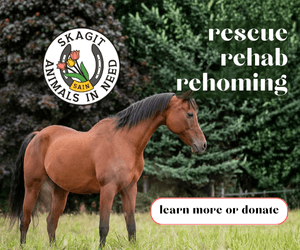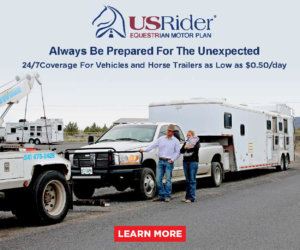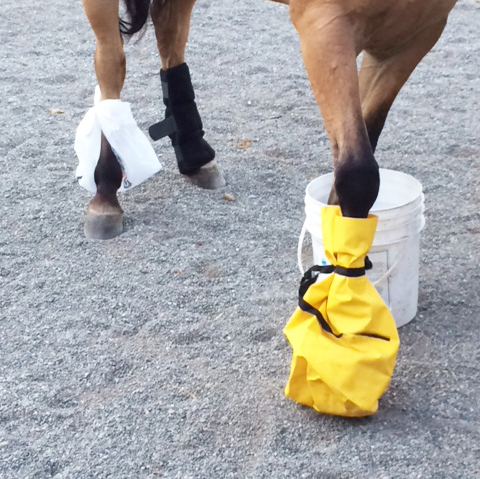by Laura Schonberg
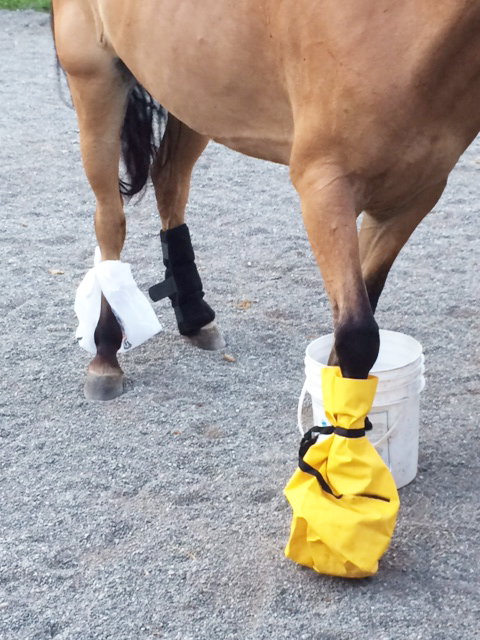
One of the challenges in bringing home a young and inexperienced horse (Poema) has been conditioning her mind, body and hooves for riding on the trail. We have had several setbacks, one of them being an abscess that not only took its sweet time rupturing, it also made a mess of her frog and left her lame for several weeks. While consulting about treatment with a veterinarian, I realized that I need to do some things with all my horses to prepare them for home care. Desensitizing a horse to having their foot in a bucket, tolerating a soaking boot, wearing an ice wrap, accepting a hose with running water, or standing for treatment is best done long before that care is necessary.
Consider the following:
Soaking a hoof. Taking the time to train my horses to stand in a bucket to soak a hoof should be done well before pulling out the Epsom salts. This bucket will sound a lot like their food bucket, but doesn’t have the same function so training is essential. I often leave gallon buckets in the horses’ pen for them to mess around with so when the time comes, it is not a new item of interest. Part of the process also includes the ability to stand still for extended periods of time, being willing to lift and place a hoof/leg inside a tall plastic bucket, and/or being willing to keep a hoof in a shallow rubber bucket. Taking the time for the horse to be comfortable with different temperatures of water (very warm to very cold) will also pay off in the long run. When there’s no medicinal product in the bucket its not a big deal if it gets tipped over 100 times before the horse is accustomed to it.
Bagging a hoof. Since I had hoof issues this winter with two of my horses, I did a lot of research. One of my horse’s hooves are too big for a soaking boot, so I had to find an alternative. After desensitizing him to plastic bags being tied on his legs, we’ve been practicing being soaked and/or hosed with a rubber coated/water proof bag (designed for horses) tied to his leg. This took some practice. The bag was okay, but he needed exposure to the water (warm and cold) being poured in to the bag while it was on his leg.
Icing. When Poema’s hoof was being so troublesome, she also had some inflammation in that same leg. Because she is still so green, it was a struggle to get her comfortable with the hose and running water on her skin. This was a lot more fun to practice when I didn’t need her to tolerate being hosed. I have also invested in gel packs that can be cooled and then wrapped/velcroed to the leg. Being able to stand while I adjusted and tightened the straps provided an opportunity for Poema to practice feeling what I need her to do—mainly, standing with her legs planted vs. picking them up when I touched them.
Applying ointments. This was a real struggle when my young mustang first came home, overwhelmed by sweet itch. In order to get it under control, I needed to touch her everywhere to apply ointment, twice daily: eyes, ears, nose, “arm pits”, belly, teats, between her back legs, root of the tail and the ridge of her neck. She did not like being touched, particularly around her face. There are many minor yet common injuries that occur around the head and hooves. It is critical to teach a horse to be “soft” to your feel and comfortable being doctored. This took time and a tremendous amount of patience. I made an early mistake handling Poema’s head and we’re just now getting to where she is quiet again when I need to treat around her eyes.
Having your horse feel comfortable while receiving various hoof, leg and body treatments prevents frustration and promotes healing. This beats the scenario of battling a 1,000 pound animal on a cold, wet night in the dead of winter, trying to convince it to tolerate a foot soak, or a leg being wrapped. Remember, something is always better than nothing so take the time to practice these things with your horse. You’ll be glad you did.
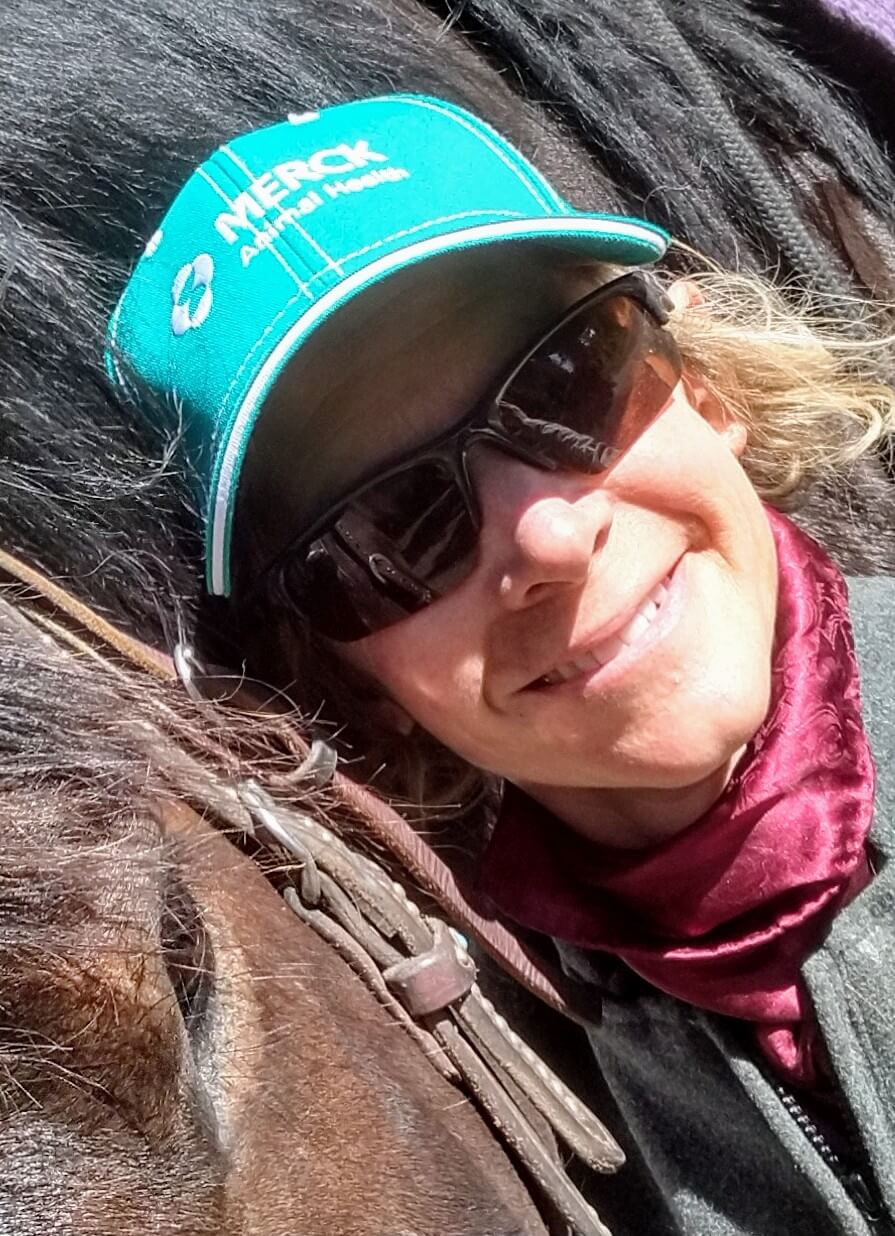
Thankful to call the Pacific Northwest home, Laura Schonberg is an educator in a local school district and is outside at her place when she isn’t inside at work. Summers are spent cow-girling at a friend’s ranch, with forrays into the Cascade Mountains as time and weather permit year-round. Winter finds her at a local barn doing dressage lessons to support her ranch riding, and re-starting horses through the county’s equine rescue program.




